Almost every country has it's most famous and tourist-favored holy shrines - and they are all typically large, opulent and with long, rich histories. And they are often the most visited places in that region (i.e. The Taj Mahal). Even the U.S. has a few like the Cathedral Church of St. John the Divine in NYC. In every country and city we have visited, the typical #1 - #5 top-listed tourist sites are holy shrines/churches/mosques/temples (and then Aquariums!?!).
Why is that? Fish have to swim, people gotta pray?
I have a theory (not too complicated or original I'm sure) it is because they are typically the best on-going record of the cohesive cross-factions of culture, history, politics, religion and architecture - all rolled into one multi-course meal; properly preserved and honored, and easily absorbed and understood by the old, the young, and even outsiders like us. And, of course, also a huge source of spiritual inspiration...and sinly "pride". :)
So, it was no surprise that the #1 site in Barcelona is also a Basilica, but we can guarantee you there is nothing like it on the planet. Nothing. And of course, given Spanish art history, it is breathtaking, unusual and more than a few degrees off-center of typical European expression.
They say it is a combination of Germanic neo-gothic, French Art Nouveu and Spanish Modernism...all blended in a mixture of arcs and non-90 degree angles with heavily nuanced organic and natural design elements. It is an array of design elements mixed in a blender - all with purpose, and "mostly" complimentary (there are a few things on the outside of the structure, that even to the untrained eye, looked "forced fit" - see professional criticisms below).
It short-hand (and crass terms), it looks like a Hollywood model-shop designer created it for some future, or other worldly utopian, Dune or Lord of the Rings type movie.
Describing Sagrada Família, art critic Rainer Zerbst said, "It is probably impossible to find a church building anything like it in the entire history of art"
It has its own rich and complicated history, which you can read here.
A few highlights for me though:
- It was started in 1882 and is still only 60% completed. It is projected to be finished around 2030, so a construction timeline of almost 150 years! At first this was unbelievable to me, but then I realized most of the forts and cathedrals we have seen (with the exception of the Taj) typically took 100 - 300 years to complete.
- While from the outside it looks like it is heavily under construction, in fact when you enter, it is a completely finished (and enormous) church inside. Very smart to add the largely decorative and non-functioning massive tower/spires last.
- The interior arches, columns and beyond-amazing ceiling all feel like you are in a marble forest and/or cavern of large trees, branches and hanging mosses made from stones. It is very organic and almost feels alive.
- The museum under the church is as stunning as the building itself with an enormous model shop where each piece (and even many drawn, but rejected plans) are both hand- and CAD-created in 1:10 and 1:20 scales. It also has the photo archives, original drawings as they progressed over 100+ years, plus the biography and life-and-times of the famous Catalan architect Antoni Gaudí (1852–1926). Senor Gaudi is buried on-site, right below the main alter.
- It also has a fully operating and large chapel right under the main alter as well. It reminded me of when European immigrants (of means) wanted two kitchens - the formal Sunday kitchen upstairs and the workhorse kitchen in the basement for everyday use.
- The building design has had its detractors: George Orwell called it "one of the most hideous buildings in the world" James A. Michener called it "one of the strangest-looking serious buildings in the world", and British historian Gerald Brenan stated about the building "Not even in the European architecture of the period can one discover anything so vulgar or pretentious."
- The building's distinctive silhouette has become the visual iconic symbolic of Barcelona itself, like the Eiffel Tower is to Paris, and draws an estimated 2.5 million visitors annually. At 20 Euro's a head, it creates a sizable construction and maintenance budget
If you come to Barcelona, you will visit it. And if you are a "church chaser" tourist, put it on your list. Love it or hate it, you have to experience it.
- Mike
I will openly admit that I was moved when I walked inside this building. The outside is a bit of a mess with it's multitude of facades, scaffolding, cranes and tourists. Inside is like a marble forest. The organic feeling of the columns and ceiling like leaves in conjunction with the stained glass windows was slightly overwhelming but created quite the scene for spirituality.
I can't imagine finding my quiet place amongst all of the people, but I hope that the locals have a time that they can visit the space and enjoy it.
I do think they have a bit of a racket going. This is the only holy shrine, fort, temple, church that we visited that is incomplete. Most of these places you visit once and check it off your list. Even I said I might come back to see it again. Makes easy work for the development office.
- Suzanne
Why is that? Fish have to swim, people gotta pray?
I have a theory (not too complicated or original I'm sure) it is because they are typically the best on-going record of the cohesive cross-factions of culture, history, politics, religion and architecture - all rolled into one multi-course meal; properly preserved and honored, and easily absorbed and understood by the old, the young, and even outsiders like us. And, of course, also a huge source of spiritual inspiration...and sinly "pride". :)
So, it was no surprise that the #1 site in Barcelona is also a Basilica, but we can guarantee you there is nothing like it on the planet. Nothing. And of course, given Spanish art history, it is breathtaking, unusual and more than a few degrees off-center of typical European expression.
They say it is a combination of Germanic neo-gothic, French Art Nouveu and Spanish Modernism...all blended in a mixture of arcs and non-90 degree angles with heavily nuanced organic and natural design elements. It is an array of design elements mixed in a blender - all with purpose, and "mostly" complimentary (there are a few things on the outside of the structure, that even to the untrained eye, looked "forced fit" - see professional criticisms below).
It short-hand (and crass terms), it looks like a Hollywood model-shop designer created it for some future, or other worldly utopian, Dune or Lord of the Rings type movie.
Describing Sagrada Família, art critic Rainer Zerbst said, "It is probably impossible to find a church building anything like it in the entire history of art"
It has its own rich and complicated history, which you can read here.
A few highlights for me though:
- It was started in 1882 and is still only 60% completed. It is projected to be finished around 2030, so a construction timeline of almost 150 years! At first this was unbelievable to me, but then I realized most of the forts and cathedrals we have seen (with the exception of the Taj) typically took 100 - 300 years to complete.
- While from the outside it looks like it is heavily under construction, in fact when you enter, it is a completely finished (and enormous) church inside. Very smart to add the largely decorative and non-functioning massive tower/spires last.
- The interior arches, columns and beyond-amazing ceiling all feel like you are in a marble forest and/or cavern of large trees, branches and hanging mosses made from stones. It is very organic and almost feels alive.
- The museum under the church is as stunning as the building itself with an enormous model shop where each piece (and even many drawn, but rejected plans) are both hand- and CAD-created in 1:10 and 1:20 scales. It also has the photo archives, original drawings as they progressed over 100+ years, plus the biography and life-and-times of the famous Catalan architect Antoni Gaudí (1852–1926). Senor Gaudi is buried on-site, right below the main alter.
- It also has a fully operating and large chapel right under the main alter as well. It reminded me of when European immigrants (of means) wanted two kitchens - the formal Sunday kitchen upstairs and the workhorse kitchen in the basement for everyday use.
- The building design has had its detractors: George Orwell called it "one of the most hideous buildings in the world" James A. Michener called it "one of the strangest-looking serious buildings in the world", and British historian Gerald Brenan stated about the building "Not even in the European architecture of the period can one discover anything so vulgar or pretentious."
- The building's distinctive silhouette has become the visual iconic symbolic of Barcelona itself, like the Eiffel Tower is to Paris, and draws an estimated 2.5 million visitors annually. At 20 Euro's a head, it creates a sizable construction and maintenance budget
If you come to Barcelona, you will visit it. And if you are a "church chaser" tourist, put it on your list. Love it or hate it, you have to experience it.
- Mike
I will openly admit that I was moved when I walked inside this building. The outside is a bit of a mess with it's multitude of facades, scaffolding, cranes and tourists. Inside is like a marble forest. The organic feeling of the columns and ceiling like leaves in conjunction with the stained glass windows was slightly overwhelming but created quite the scene for spirituality.
I can't imagine finding my quiet place amongst all of the people, but I hope that the locals have a time that they can visit the space and enjoy it.
I do think they have a bit of a racket going. This is the only holy shrine, fort, temple, church that we visited that is incomplete. Most of these places you visit once and check it off your list. Even I said I might come back to see it again. Makes easy work for the development office.
- Suzanne
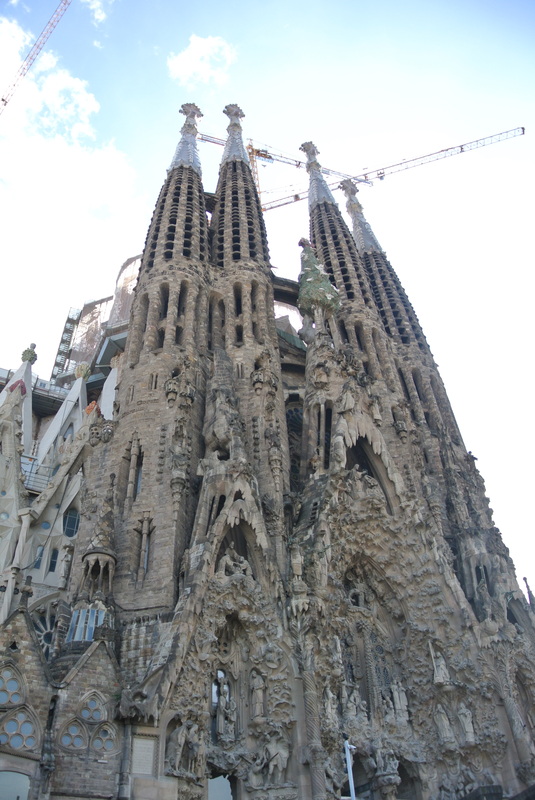
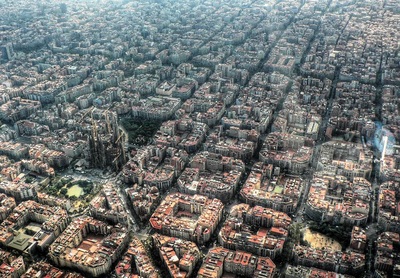
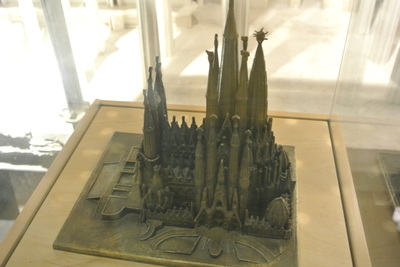

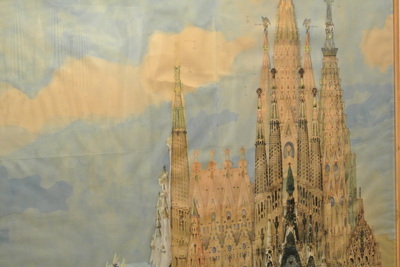
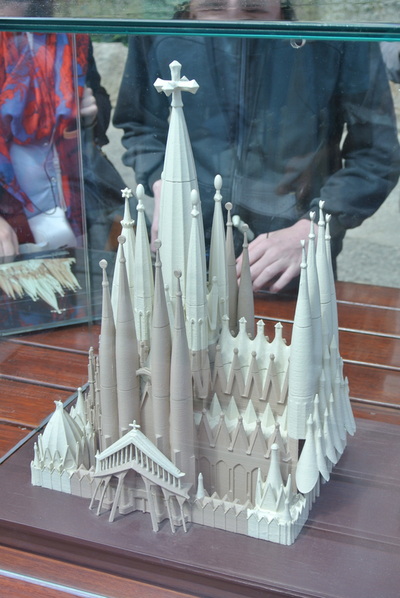

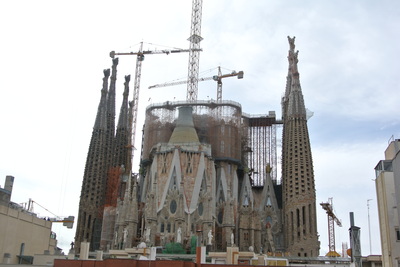
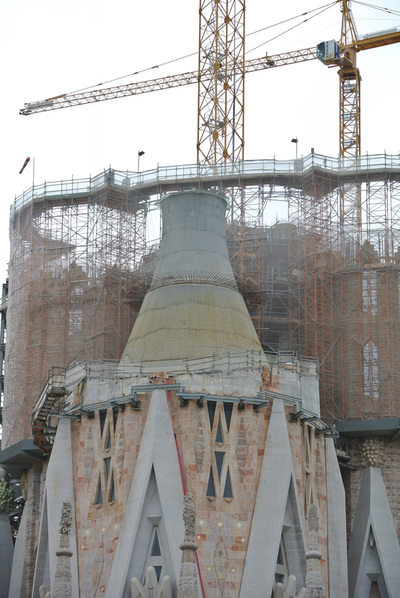
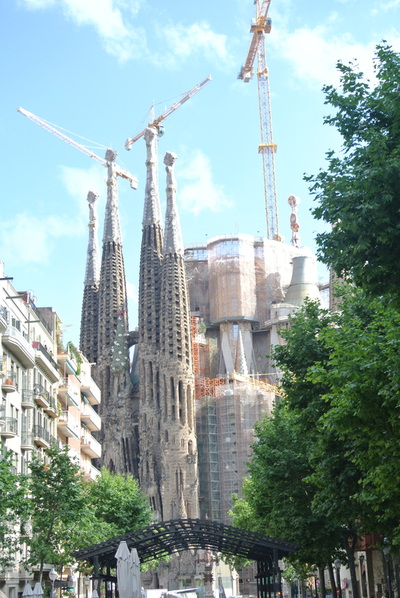
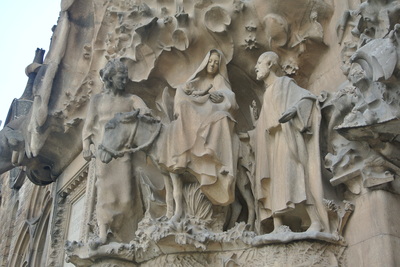
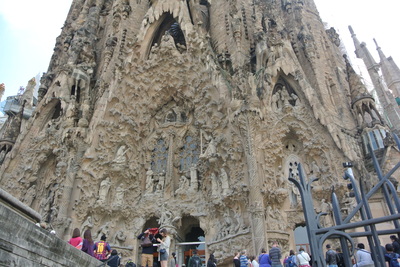
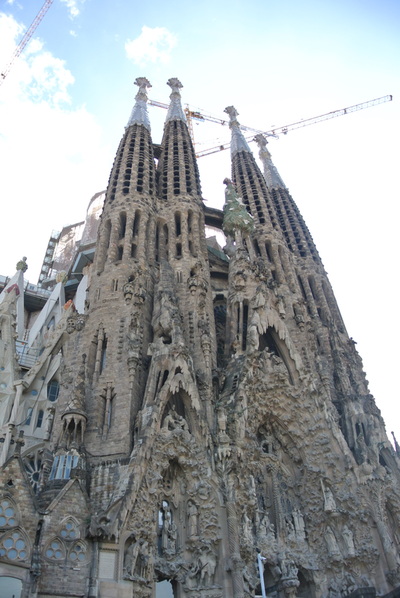
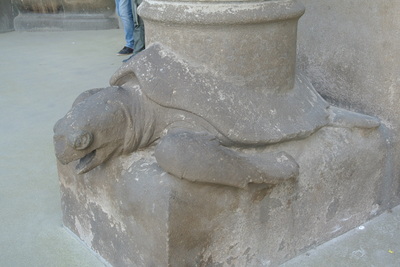

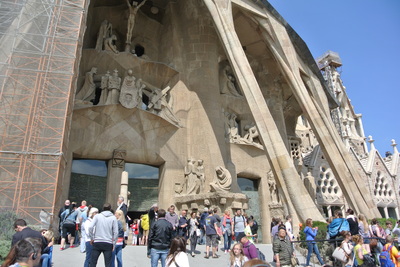
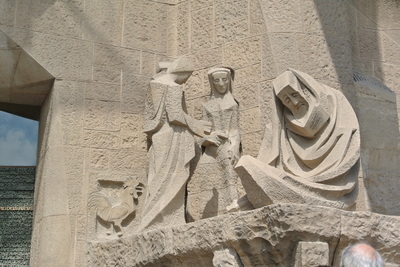
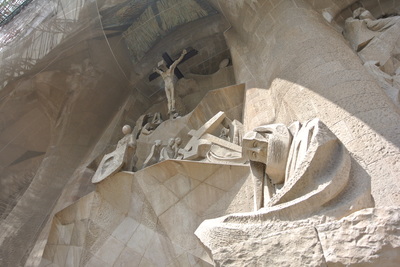



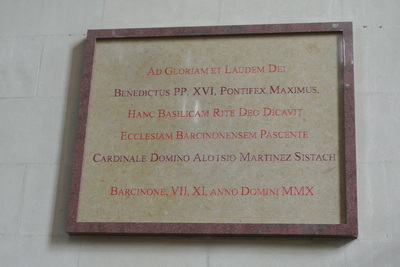


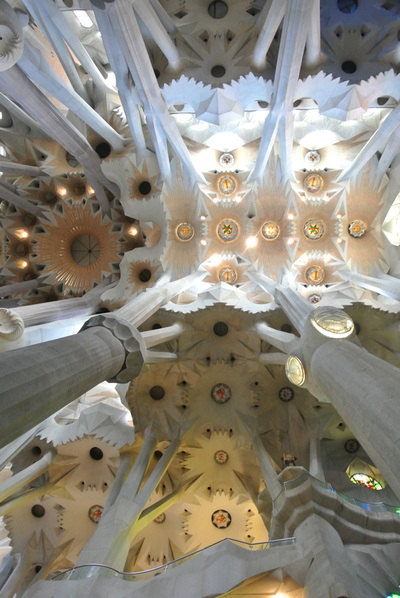





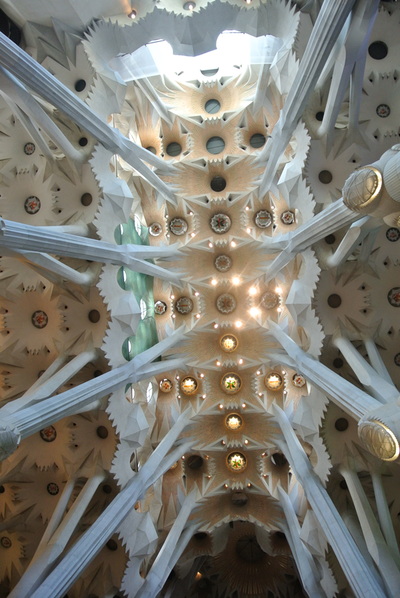

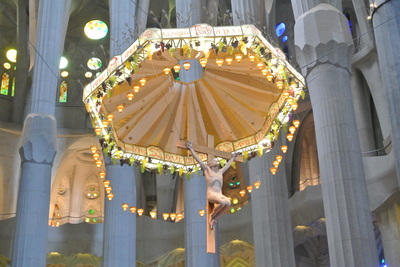
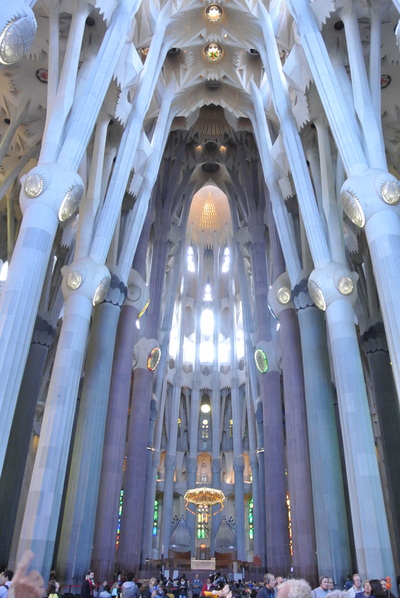
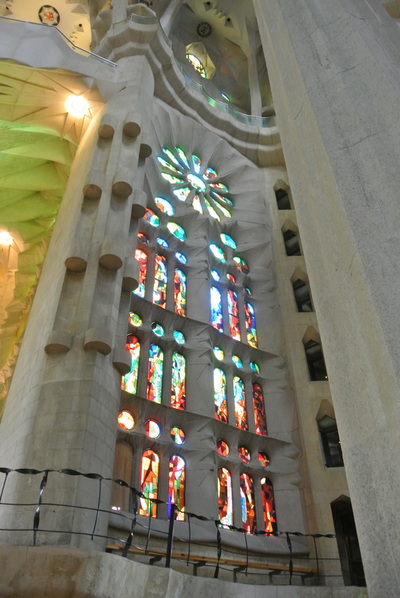


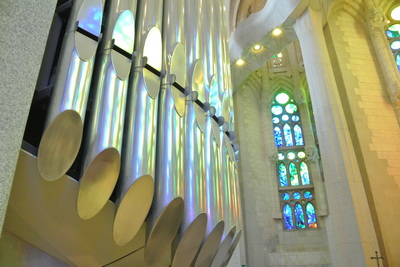
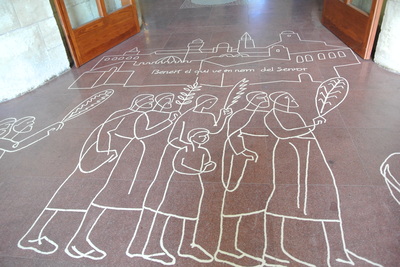
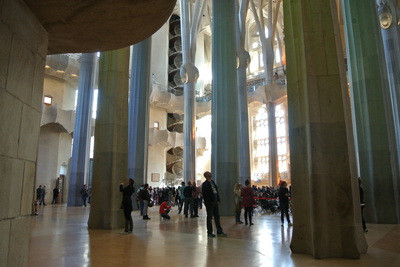
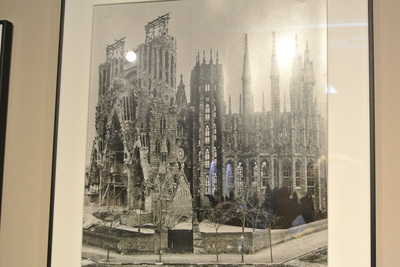
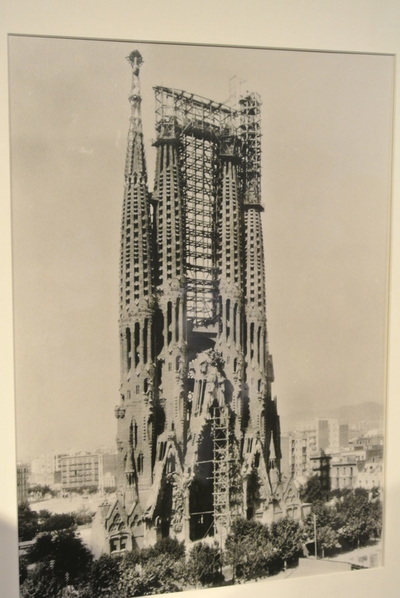
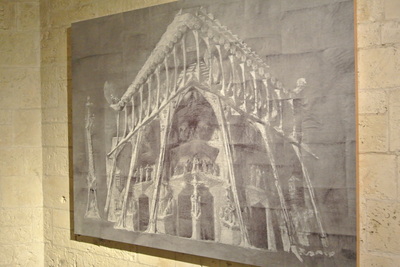
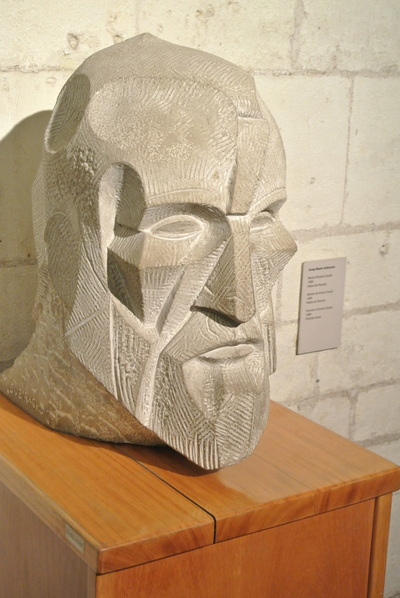



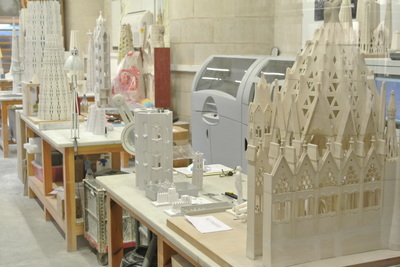
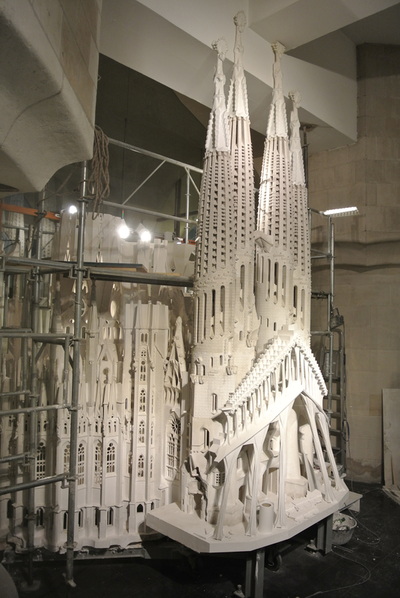

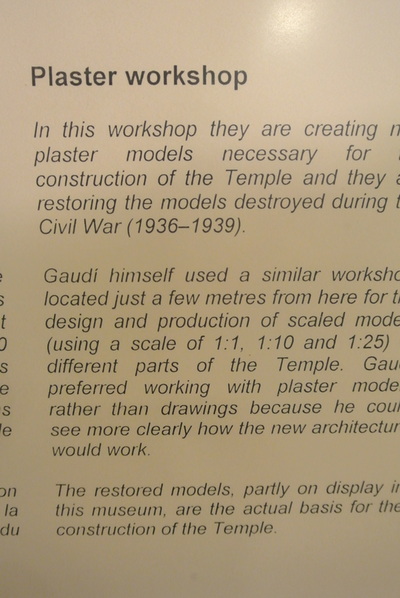
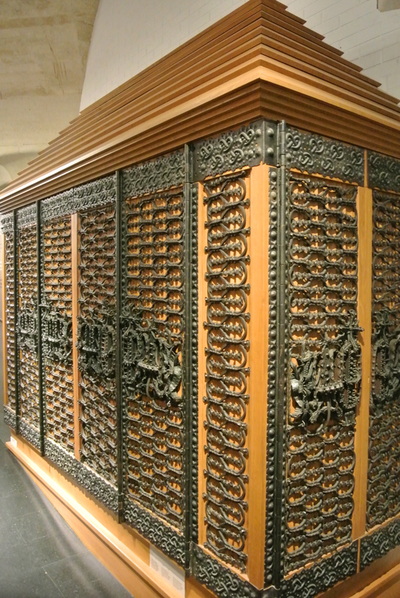
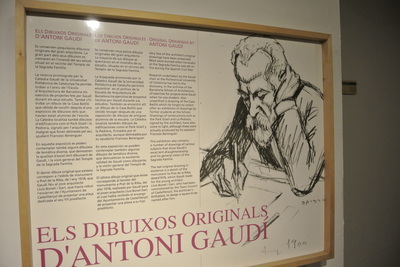
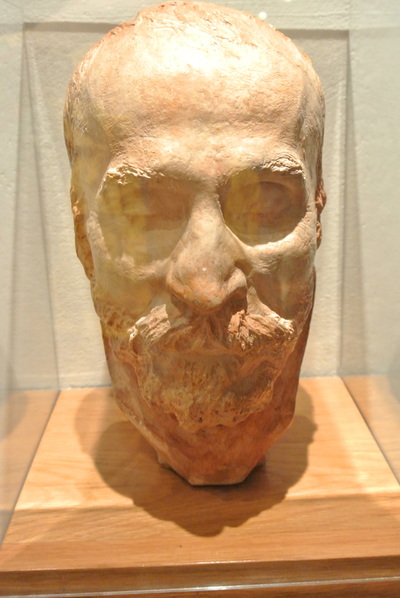


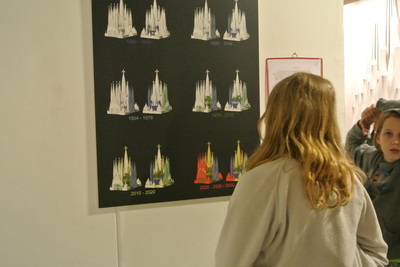
 RSS Feed
RSS Feed
